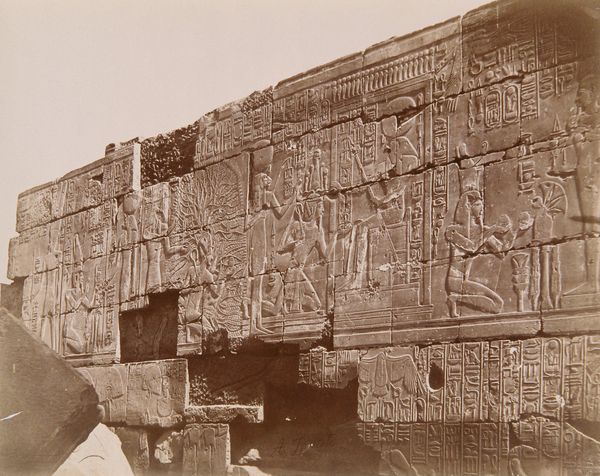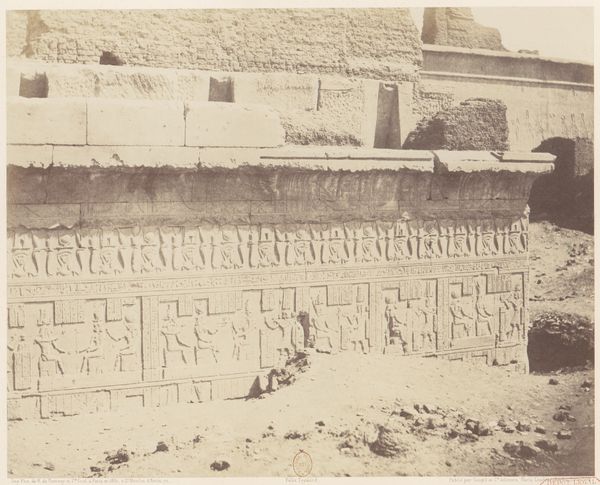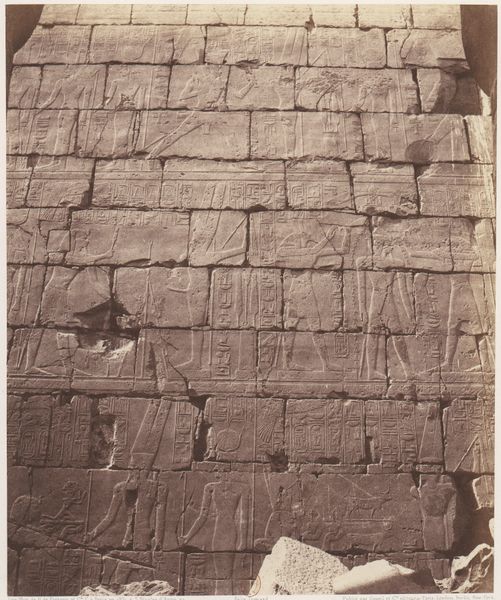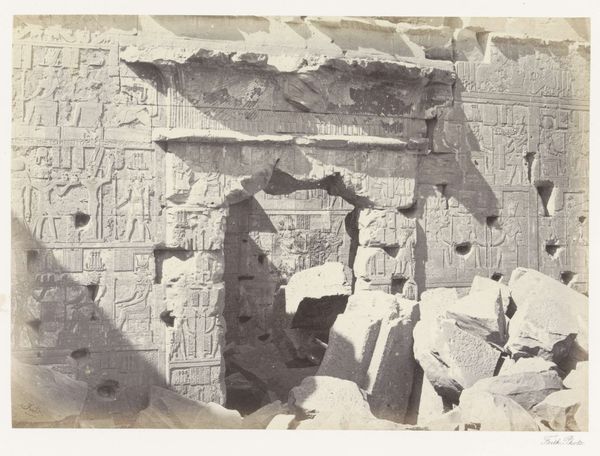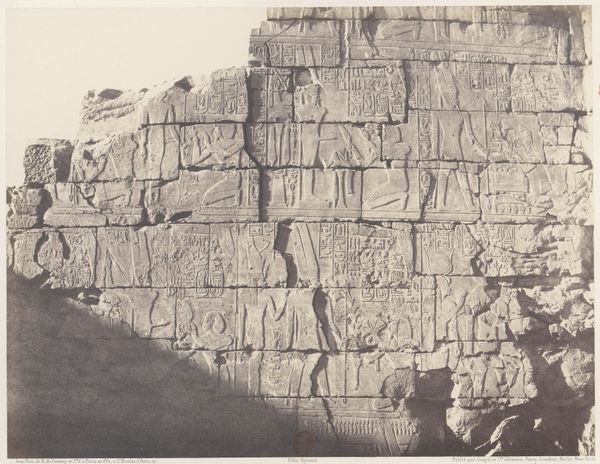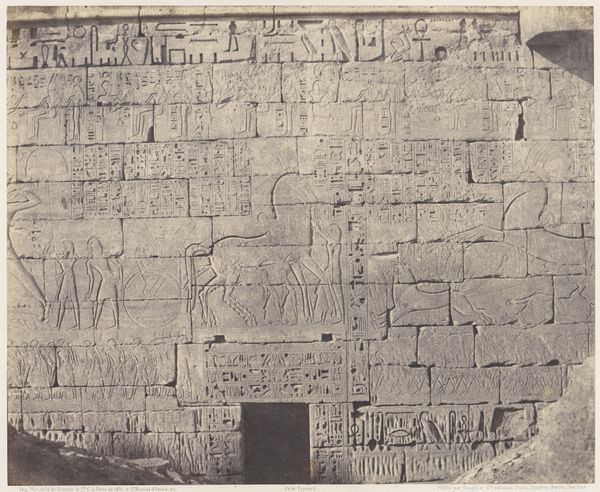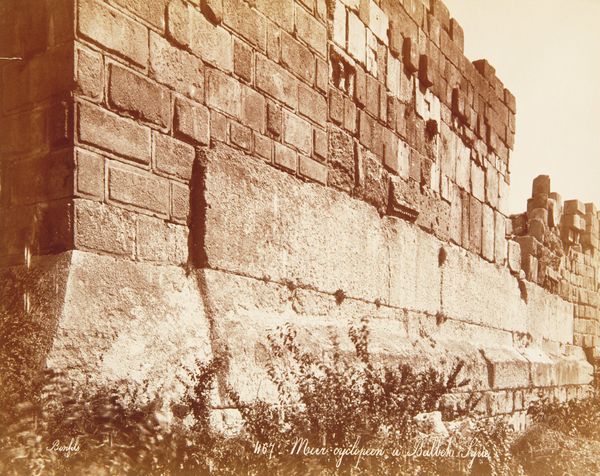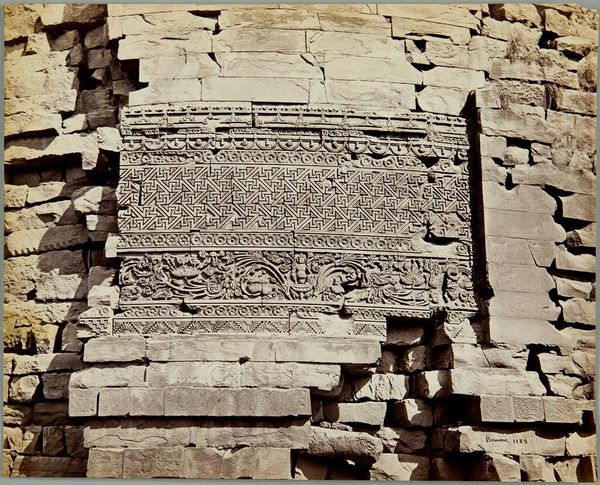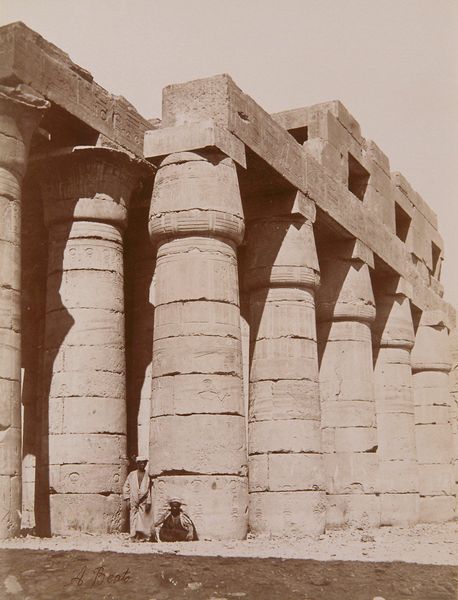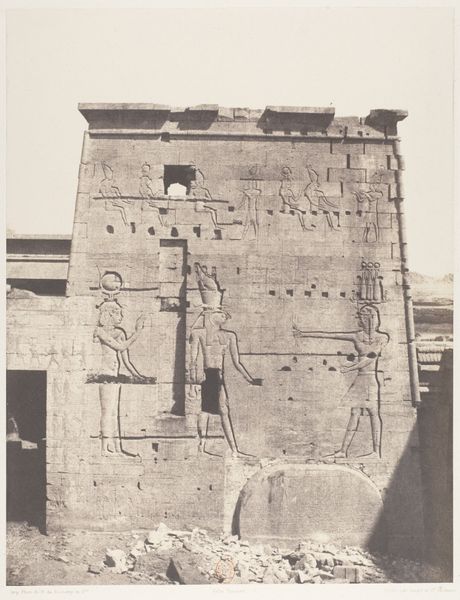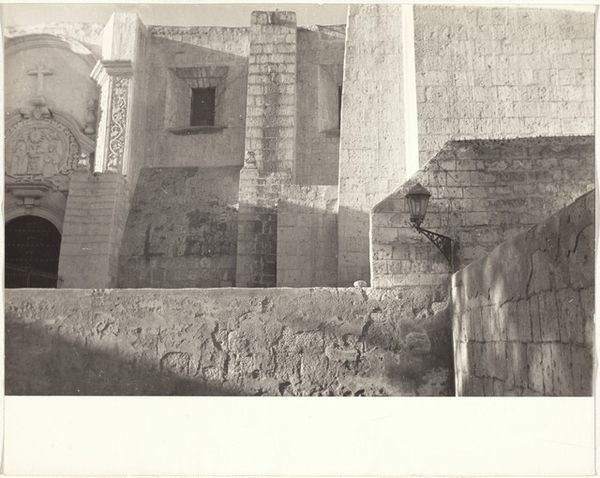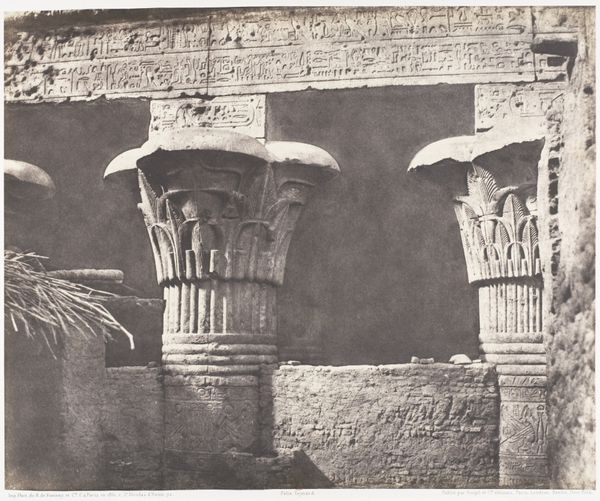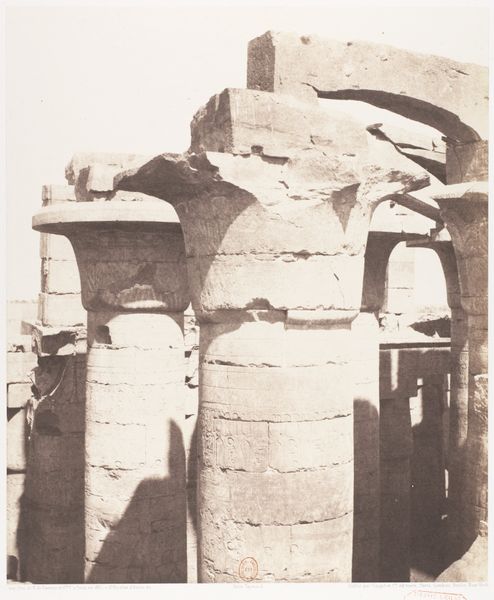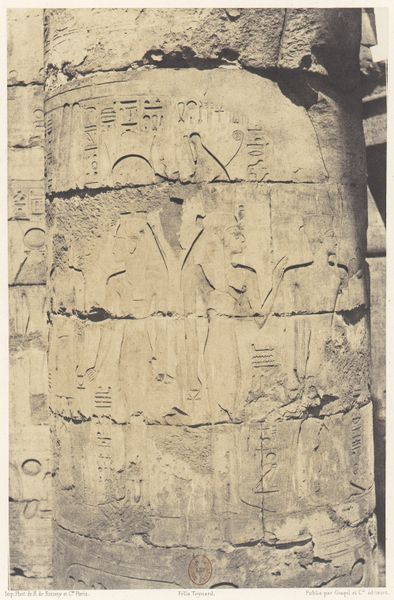
albumen-print, photography, albumen-print
#
albumen-print
#
narrative-art
#
landscape
#
ancient-egyptian-art
#
photography
#
history-painting
#
albumen-print
Dimensions: 10 7/16 x 8 3/16 in. (26.51 x 20.8 cm) (image)14 x 11 in. (35.56 x 27.94 cm) (mount)
Copyright: Public Domain
Curator: This evocative albumen print, attributed to Antonio Beato and dated to around the 19th century, presents a weathered wall adorned with hieroglyphs, part of the ancient narrative etched in stone. Editor: Immediately, I notice the tonal range, the sepia so characteristic of these older photographic processes, gives the stones a texture and feeling like dried mud bricks in scorching light. Curator: Absolutely, that’s where the process really informs the content, doesn’t it? What we are seeing, beyond just a depiction of a wall, is an accumulation of meanings and stories, passed down through visual language. Consider each hieroglyph; an encapsulation of ancient knowledge, belief, and historical record. Editor: The texture here interests me as well, I find myself focusing on how Beato chose to capture these reliefs, which emphasizes not only the material itself – likely sandstone – but also the physical act of carving. The labour, the social structure needed for this creation… it speaks of the economics as well. Curator: And the erosion! Time, climate, maybe even conflict – each plays a role in shaping what we perceive now. Even these very symbols bear traces of cultural and historical shifts. Note the placement, their alignment on these individual blocks; its physical manifestation of organization and intent. Editor: That intent involved many hands; each mason would cut a single module out of an quarry, transport it to the location to be set in place. In a sense, photography also enables replication and dissemination. Here we're encountering the afterimage of monumental labor, but the photo itself comes from a specific moment of access, consumption of labor itself in tourist form. Curator: You've hit on something key about tourism—but also, it raises fascinating questions about cultural memory and our connection to it. I sense a profound link to something vast and enduring as my eyes drift along the wall. These symbols aren’t merely decorative; they serve to transmit legacy, power, identity across millennia. Editor: So it really comes down to materiality: Photography provides us the flat copy that encourages deeper interpretation of these lost hands and labor conditions. It encourages discourse that considers those contributions as worthwhile components when understanding works from antiquity. Curator: An insight to keep with us, certainly. Editor: Definitely helps to appreciate our shared, human impact in material terms.
Comments
No comments
Be the first to comment and join the conversation on the ultimate creative platform.
